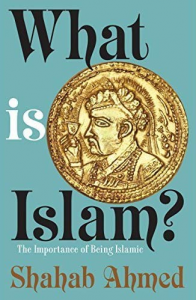Shared Article from Econlib
Keith Smith on Free Market Health Care - Econlib
Entrepreneur and Anesthesiologist Keith Smith of the Surgery Center of Oklahoma talks with host Russ Roberts about what it's like to run a surg…
Russ Roberts @ econtalk.org
Of course the interview isn’t really about free market health care,
because there isn’t any, but this is a discussion of an ongoing practical project. But there is a lot of interesting stuff here about health care markets, and about pricing in health care, and the cost syndrome that results when it is politically and institutionally obliterated — or turned into a bizarre, unpredictable charade of ceremonial gestures, universally-acknowledged fictions and utterly opaque settlements.
Most American policy approaches to health care and health insurance are essentially (attempted) cost-covering solutions, but what may be needed are cost-reduction solutions. Cost coverage attempts to develop systems and programs that can (1) extract enough resources (from rate-payers, or premiums, or corporate profits, or…), then (2) distribute those resources to the unhealthy (through a regulated health insurance company, or a government health payments agency, or a government health service), in order to (3) cover systemic, catastrophically high healthcare costs.[1] The other possible approach would be to look for ways (3′) to dramatically reduce healthcare costs, especially for routine care and non-emergency procedures, often (2′) by trying to reduce systemic constraints that produce them, obscure them, or constrain competitive checks on them, so that (1′) most people in most cases have a better chance of marshaling (much smaller) resources of their own to cover (much lower) medical costs, while catastrophic and emergency cases can be more effectively handled by institutions, networks, or culture that are better fitted to doing just those things.
From the interview:
Russ Roberts: . . . And now, a question. The question is, is that–in my world you [relatively simple, fee-for-service healthcare in a competitive market -R.G.] would be the common way that this world worked. And then the question would be: For people who can’t afford it, a group we touched on earlier, who can’t afford $10,000, can’t afford the $3,000 hernia. Maybe they’re homeless. Maybe they’re just really poor. Maybe they are a single mom and that single mom is paying tuition at the private school that I’m in favor of because there’s no government schools any more. So, how’s that mom going to pay for her biopsy or her kid’s surgery when it’s $10,000? And, my answer has always been, ‘Well, I think they’ll be foundations that’ll help fund that.’ But I’m curious what you’d say, and: Do you have a vision that the rest of healthcare could move more into your direction and away from the direction that everyone else seems to be leaning? . . .
Keith Smith: Yeah. The what about the poor?
-question is a very frequent question. And I always caution people not to consider the poor in the aggregate. They are individuals; and I believe that individuals that do not have the means to secure care that they want or need should be treated as individuals–partly because, to consider them in the aggregate is to beg for a centralized solution that will fail them and ultimately will just ration to them.
So, one way to think about this is that, at current prices, we’re all poor. And the only way to bring–the only way to bring prices down without sacrificing quality in every other industry and market that is known to man is market competition.
So, we believe that as market competition is not thwarted but actually encouraged, or not hamstrung by the players in the industry now, and as there’s more market competition, prices will fall so dramatically that the number of individuals for whom a partial or complete lack of funds is an issue, it dwindles–it becomes very, very small.
For that group of patients, we believe the answer is to be charitable. We know that our ability to be charitable is strengthened because we’ve disintermediated our system. We could care less whether the Surgery Center of Oklahoma as an institution makes a profit on an individual that you and I would both agree and characterize as poor. And as physicians, we’re happy to waive our fees when that individual comes along. And I’m here to tell you: the cost of the supplies is just not that high. And we’ve seen GoFundMe efforts to cover that. We had a patient–we had a family drive over from South Carolina to have their child’s tonsils taken out with the proceeds of the church bake sale. And when we learned that that was the story, we just gave them all their money back, and said, ‘No, no; we’re not–‘ you know, ‘We’ll do our part.’
I think that the first way to address the problem of the poor is to just have a whole lot fewer of them by making sure prices are mashed down. And then, the issue of the poor is very much more manageable. I believe that it’s a local and and individual solution that–it’s individual, per patient. Because otherwise you court the disaster of a national centralized solution that will do anything but deliver quality and care to those people.
–Keith Smith and Russ Roberts, Keith Smith on Free Market Health Care
Interview, EconTalk, 18 November 2019




